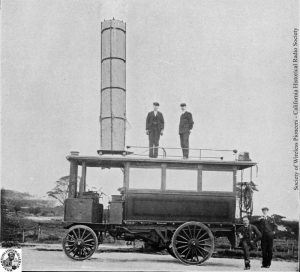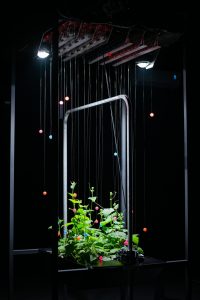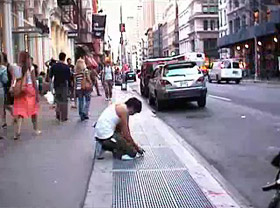 Many media art pieces share the approach that they want to turn the urban environment into a playful potential space through some kind of intervention. The Throwies, Greyworld’s Bins and Benches or We only come out at night are all prime examples of this notion. Classic examples include the early sprayers and how they used the existing structure of the NYC subway to create mobile artworks that would travel between the city’s boroughs, accumulating more audience with every station they pass through.
Many media art pieces share the approach that they want to turn the urban environment into a playful potential space through some kind of intervention. The Throwies, Greyworld’s Bins and Benches or We only come out at night are all prime examples of this notion. Classic examples include the early sprayers and how they used the existing structure of the NYC subway to create mobile artworks that would travel between the city’s boroughs, accumulating more audience with every station they pass through.
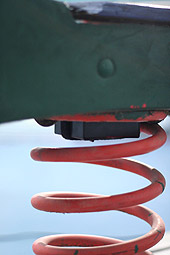 Richard The also wants to playfully engage the city dwellers. After some research and sketches in different cities (don’t miss the video of his plastic bag-visualization of the Manhattan subway), he decided to focus on playgrounds – other spaces in Foucault’s sense within cities that are dedicated to play. Many have plenty of “recreational equipment” such as see-saws, swings and merry-go-rounds but research shows that children spend still 6-12x as much time in the creative openness of the sandbox.
Richard The also wants to playfully engage the city dwellers. After some research and sketches in different cities (don’t miss the video of his plastic bag-visualization of the Manhattan subway), he decided to focus on playgrounds – other spaces in Foucault’s sense within cities that are dedicated to play. Many have plenty of “recreational equipment” such as see-saws, swings and merry-go-rounds but research shows that children spend still 6-12x as much time in the creative openness of the sandbox.
In his thesis project Playful Parasites at the UDK digital media class, Richard uses electronics to enhance the play with swings and such in order to add some narrative possibilities to the experience of play. All of his designs are add-ons which can be velcroed to an existing piece of playground equipment. They communicate via Bluetooth and can be combined in different ways. “A Swinging Spark” extends the swing through a spotlight which illuminates the playground when someone is using it during dusk or summer nights. The light might also leave the playground and touch the surrounding architecture, giving people a sense of activity. “Musical Playground” attaches audio samples to various pieces of playground equipment. 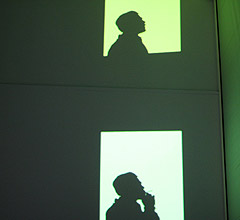 The more kids play and touch the overhead ladders and such, the more sounds get triggered and the playground takes on a whole new function as a musical instrument, giving the kids the possibility to easily create music in a networked environment.
The more kids play and touch the overhead ladders and such, the more sounds get triggered and the playground takes on a whole new function as a musical instrument, giving the kids the possibility to easily create music in a networked environment.
“Virtual Facade” plays on the fact that in Berlin, many playgrounds are adjacent to Firewalls which are basically blank walls. This design proposes to project windows on such walls behind which shadows of people show fragments of their everyday life. These fragments once again get triggered by certain movements on the playground and kids are able to create visual narratives on the wall.
Related: The TonLeiter.


